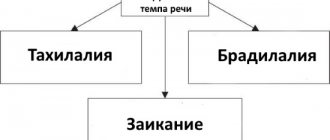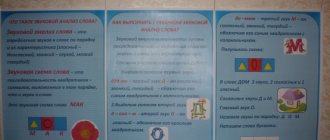Is there such a thing as too much publicity?
We have already figured out that many consonants in a row are bad and inconvenient for smooth human speech. But what about long vowel sequences?
Audio equipment, hydroaeroionization, radioactivity... It is easy to notice that vowel combinations occur at the junction of stems in compound words. As a rule, these are complex scientific terms that we rarely use in everyday life. If you try to read such words out loud, you will hear that they are involuntarily divided into two or three shorter ones (according to the number of stems). However, vowels are easier to handle due to the greater participation of the voice in their pronunciation.
The meeting place can be changed
Speaking about the “meeting place”, one cannot fail to mention the random combination of consonants at the junction of words or morphemes . A classic example from a bad poem for children: “The baby doll is furious.” With such a pandemonium of voiceless consonants, not only the baby doll will go crazy! Whistling [s] and [z] completely dissolve the innocent [v] between them, erase the boundaries of words and, when pronounced quickly, make the phrase difficult to understand.
Counterstrategy, filterpress, burgomastership, denationalization... These monsters in letter form are just words that are not very lucky with prefixes and suffixes. Often the foreign origin of either the prefix (counter-), or the root (burgomaster), or both roots (filter and press) is to blame. It is worth rejoicing that such words, as a rule, have a narrow specialization.
Tongue Twisters
It would seem that a confluence of consonants is an ideal phenomenon for tongue twisters. This is where everyone's tongues are smashed to smithereens! Let's analyze the most popular tongue twisters in the Russian language.
- Sasha walked along the highway and sucked on a dryer.
- Grass in the yard, firewood on the grass. Don't cut wood on the grass in your yard.
- In the shallows we lazily caught burbot and exchanged the burbot for tench. Was it not you who sweetly begged me for love, who beckoned me into the mists of the Liman.
It turned out to be a very motley picture. Well-known tongue twisters, it turns out, do not contain a single mind-blowing combination of consonants! The maximum here is two consonants in a row [dr], [tr], [shk]. But these combinations are widespread and do not cause difficulties.
Basically, tongue twisters are aimed at honing simple consonant-vowel syllables that are similar to each other. Thus, tongue twister improves the pace and fluency of speech at the same time.
There are several tongue twisters with consonant clusters. However, they are not so well known.
- Wipe the portrait. Wipe the portrait carefully.
- Maintaining a vehicle is more expensive than spending money on transport.
- The route was routed, but was not routed.
Such verbal exercises will not make speech more elegant, and therefore it is better to still use the old, tried and tested fruits of folk art.
Cluster of consonants: how many?
“Vdr”, “vzgr”, “stn”, even the strange “sdr” at the junction of words... Such a number of consonants per square centimeter is clearly too much for the language of the average person. And this phenomenon is called simply and figuratively: a confluence of consonants. What is this?
To clearly explain what a confluence of consonants is, let’s look at what is called the norm and deviation from it in any language. From a phonetic point of view, the most convenient scheme for pronunciation is alternating vowel and consonant sounds. It is no coincidence that words like “mother”, “baba”, “bibi” are most quickly and easily picked up by children from adults. Such words are convenient for learning in any foreign language.




